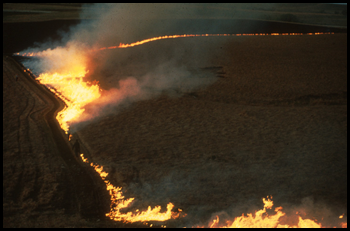
Prior to leaving KSU in 1991, Seastedt provided leadership in defining the research objectives for LTER III. Leadership and administration during LTER III were provided by Alan Knapp and John Briggs, with co-PIs David Hartnett and Don Kaufman serving in advisory roles. LTER III represented a significant expansion of the Konza Prairie LTER program in terms of both research emphasis and scientific investigators. New faculty scientists added during LTER III included Walter Dodds (1991, Aquatic Ecology), John Blair (1992, Soil and Ecosystem Ecology), and Loretta Johnson (1995, Plant and Ecosystem Ecology). The primary goals of LTER III were to understand how grazing influences biotic and ecosystem processes and patterns imposed by fire frequency over the landscape mosaic, all of which are subjected to a variable (and possibly directional) climatic regime. The additional research associated with large ungulate grazing and an expanded landscape perspective led to the establishment of several challenging studies, many of which are ongoing. These new initiatives were designed to complement programs at other LTER sites as well as enhance efforts within the LTER core areas.
